Long, Jean and Mongan, Deirdre (2010) Alcohol and drug use among young people in Ireland. Drugnet Ireland, Issue 33, Spring 2010, pp. 3-7.
| Preview | Title | Contact |
|---|---|---|
|
PDF (Drugnet Ireland, issue 33)
- Published Version
1MB |
According to the 2007 ESPAD survey, over half of 15–16-year-olds reported having ever been drunk (Figure 9). The percentages reporting drunkenness did not vary to any great extent across the three HBSC surveys. However, there were variations between the ESPAD and the HBSC surveys: in the 1999 and 2003 ESPAD surveys, the proportion of 15–16-year-olds who reported having ever been drunk was considerably higher than in the HBSC surveys. The 2007 ESPAD results were similar to those of the 2006 HBSC surveyThere are three sources of data that estimate the prevalence of alcohol and other drug use among young people in Ireland: the National Advisory Committee on Drugs (NACD) surveys on drug use among the general population,1,2 the European School Survey Project on Alcohol and Other Drugs (known as the ESPAD surveys)3,4,5 and the Health Behaviour in School-aged Children (HBSC) surveys.6,7,8 The NACD surveys classify young adults as those aged between 15 and 34, while the ESPAD surveys ascertain alcohol- and drug-using practices among 15–16-year-old school children. The HBSC surveys record health behaviours (including cannabis use) among school children aged 13–17 years. Drug use was measured for three time parameters, lifetime use, use in the 12 months prior to the survey and use in the month prior to the survey.
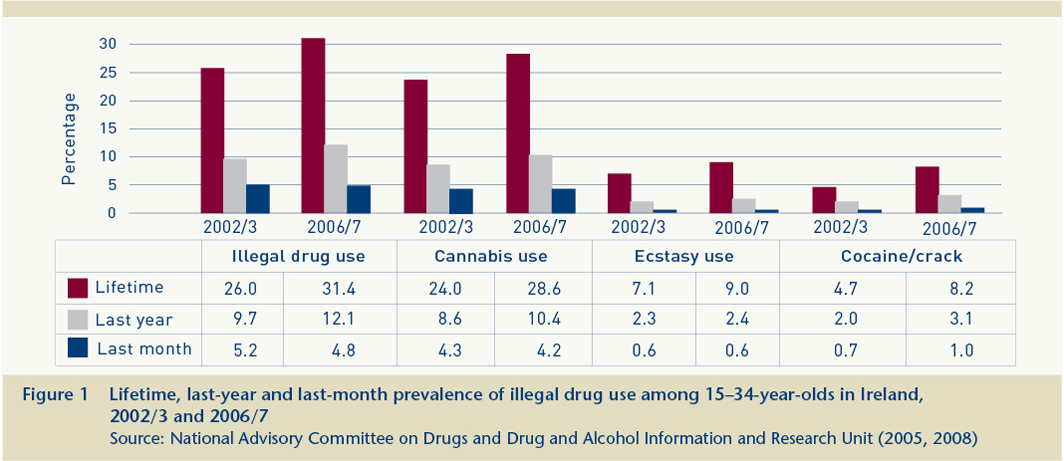
In the ESPAD surveys, the proportion of 15–16-year-old school children who reported use of any illicit drug at some point in their life decreased markedly between 2003 (40%) and 2007 (22%), a fall of 18 percentage points (Figure 2). As the majority of those who have tried any illicit drug have used cannabis (marijuana or hashish), the decrease in illicit drug use was influenced by the considerable decrease in the percentage of students who had tried cannabis at some point in their lives, from 39% in 2003 to 20% in 2007 (European average 19%). Lifetime use of solvents/inhalants decreased from 18% in 2003 to 15% in 2007, but remained higher than the European average (9%). In the case of amphetamines and cocaine powder, the proportions reporting lifetime use increased marginally to equal or exceed the European average of 3%. In 2007, one in ten of the survey participants reported that they had taken prescribed tranquillisers or sedatives at some point in their lives; the use of such drugs had decreased marginally since 1999.
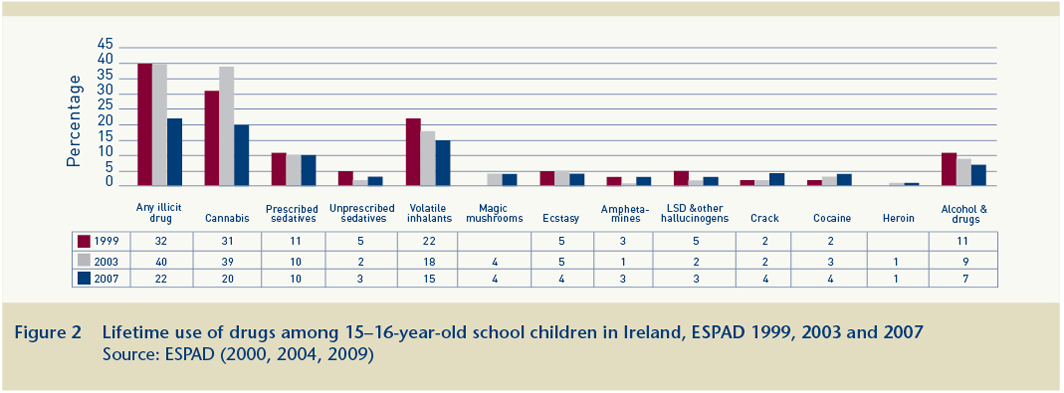
As shown in Figure 3, trends in the use of cannabis and volatile inhalants in the 12 months prior to the ESPAD survey mirror the trends in lifetime use reported above.
.jpg)
The proportion of school children who reported cannabis use at some point in their life increased with each year of age between 13 and 17 in all three HBSC surveys, except for 17-year-olds in 1998 (Figure 4). In 2006, 6% of 13-year-olds reported lifetime use of cannabis, and the proportion increased steadily with each year of age, to 38% for those aged 17 years. The proportions of those who had used cannabis in each age group from 14 to 17 years increased between 1998 and 2006.
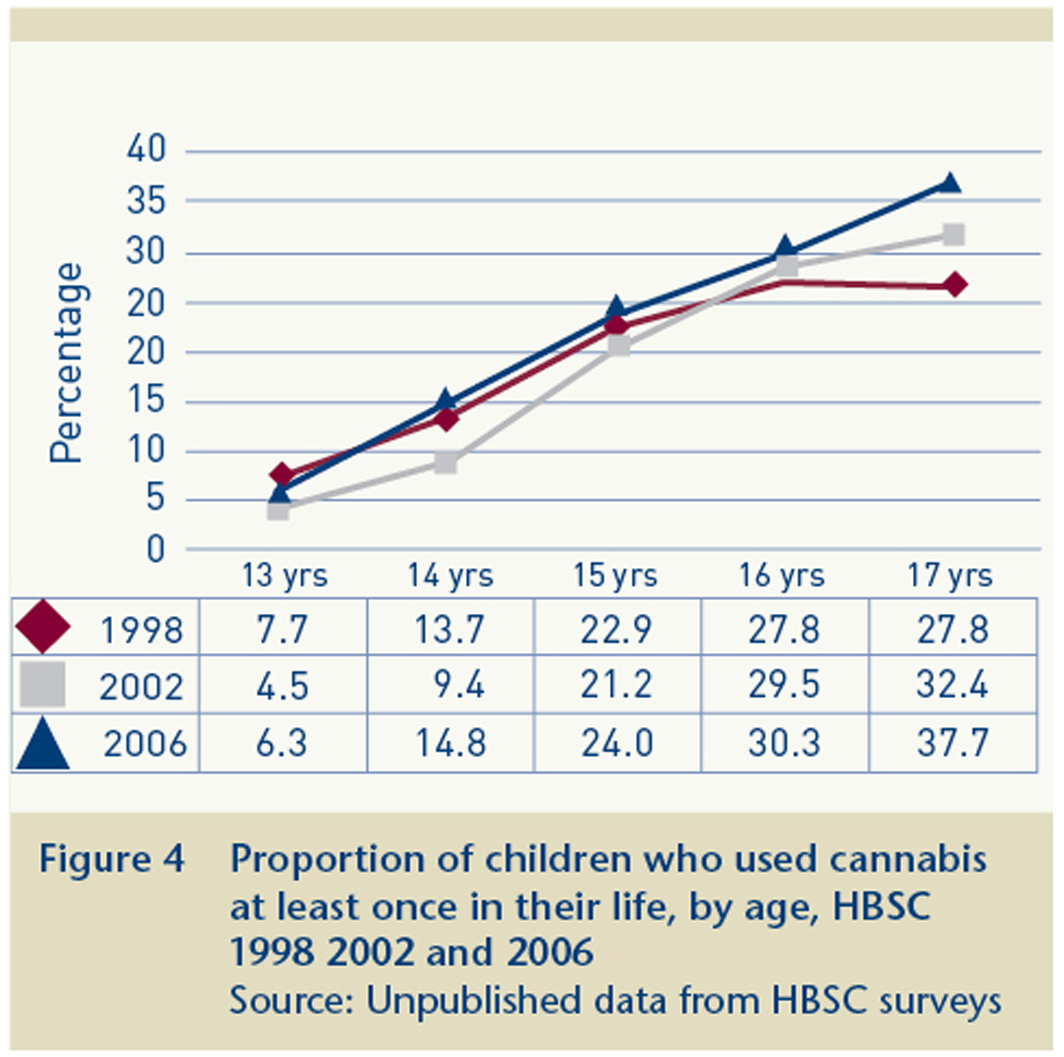 ,
,
The proportion of children who reported commencing cannabis use at 13 years or under was considerable, and similar in both the HBSC and ESPAD surveys (Figure 5).
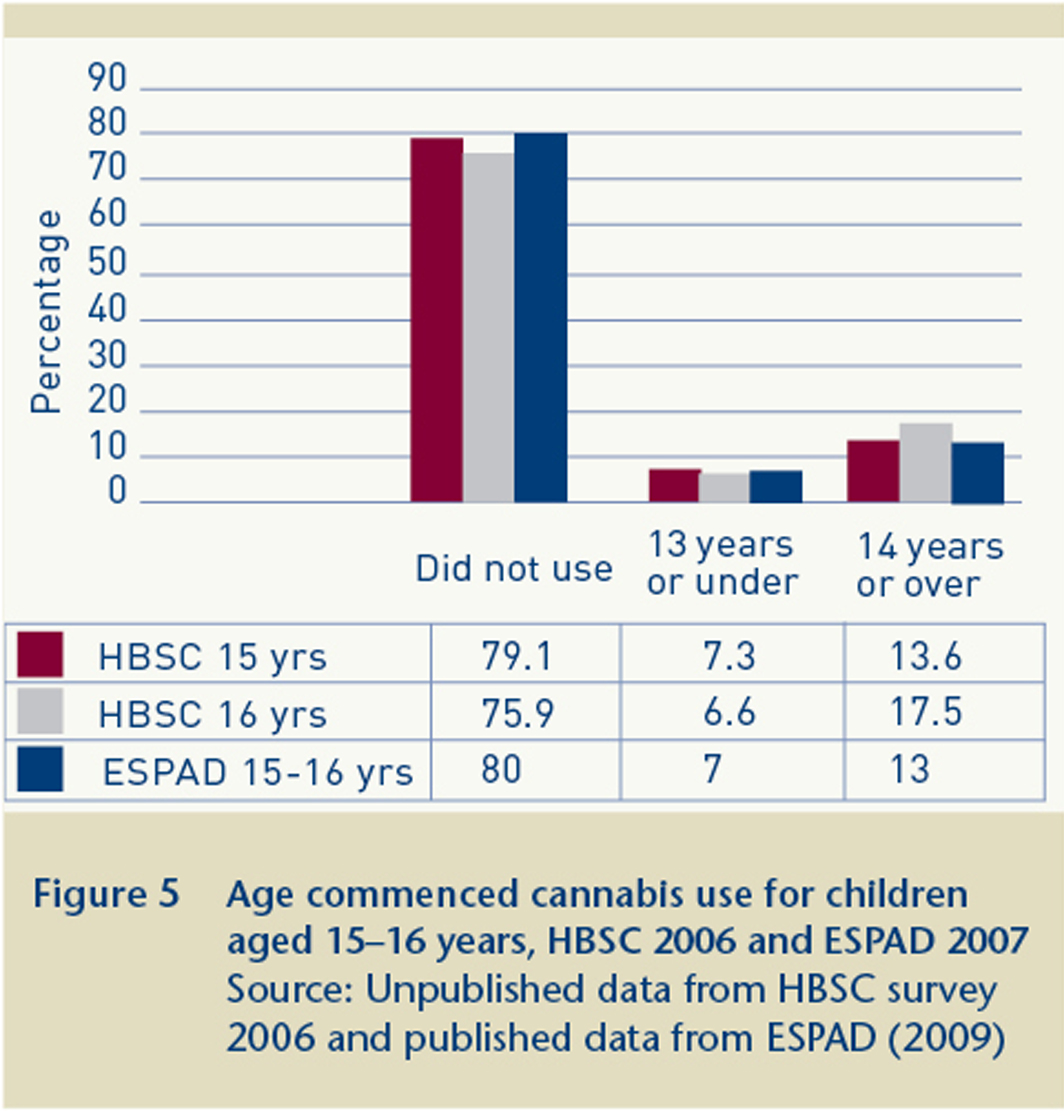
In 2006/7, the proportion who had used cannabis three or more times was higher in the HBSC (10.4% and 12.3%) and than in the ESPAD survey (8%) (Figure 6).
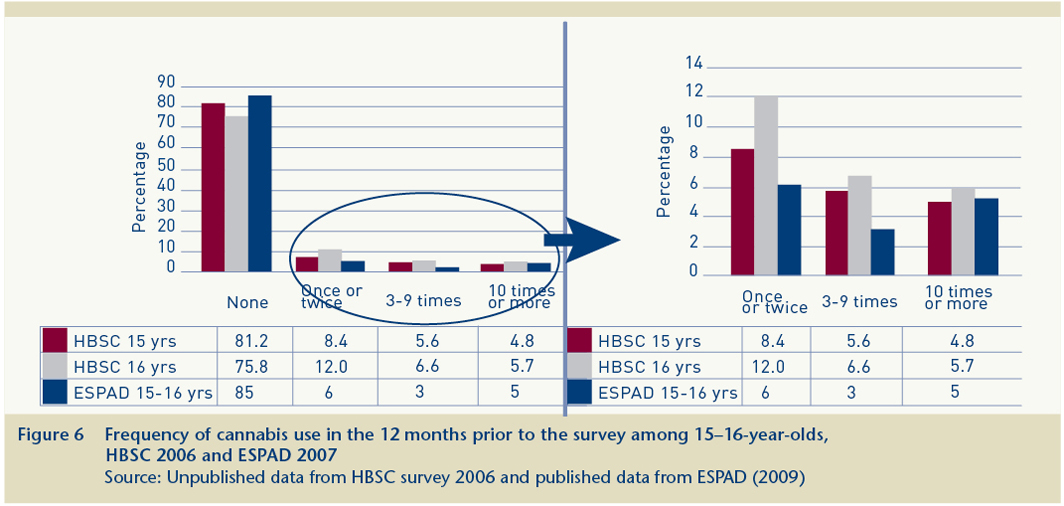
Alcohol use
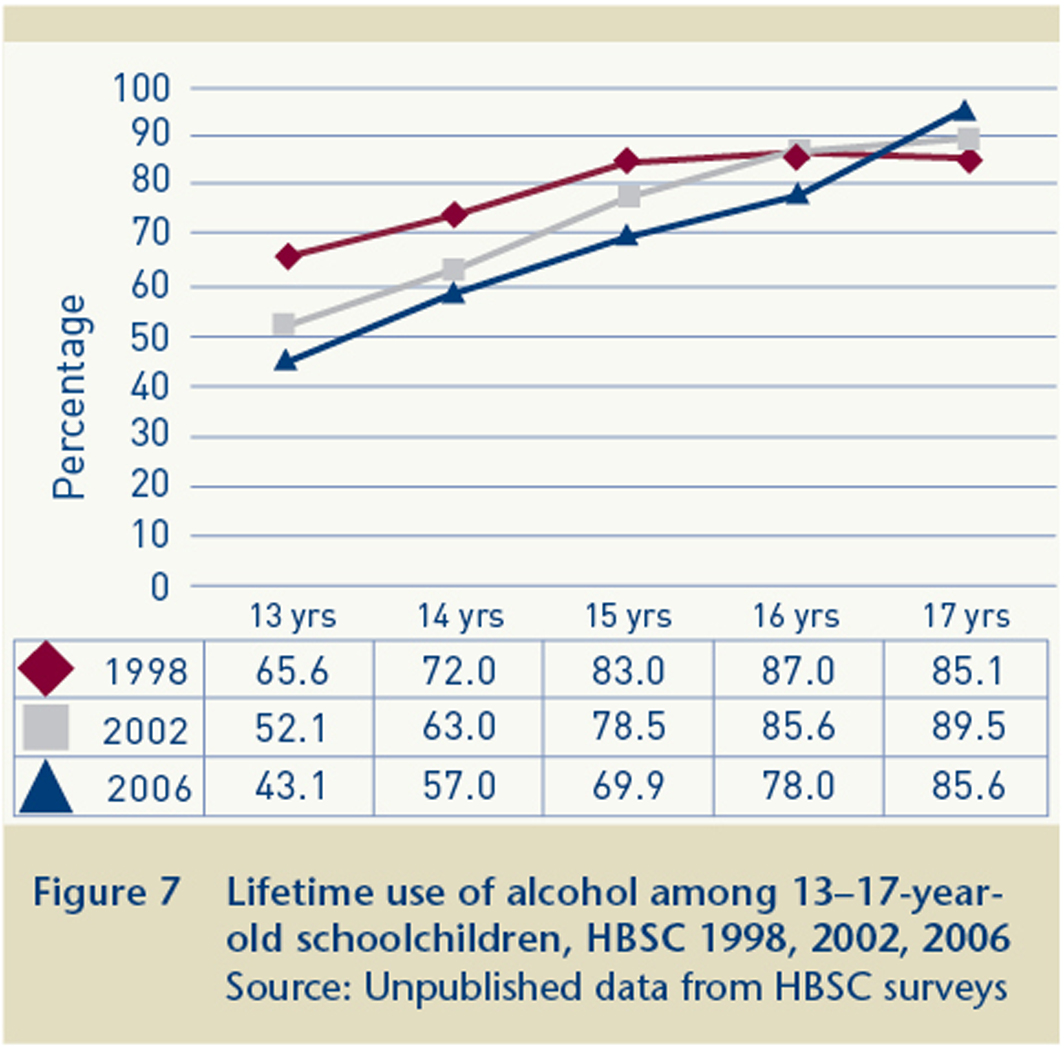
Last-month use of alcohol decreased among the age groups from 13 to 16 years between 1998 and 2006. In all three surveys, rates of alcohol use were higher at each year of age; for example, in 2006, 13% of 13-year-olds, and 25% of 14-year-olds had consumed alcohol in the previous month, (Figure 8).
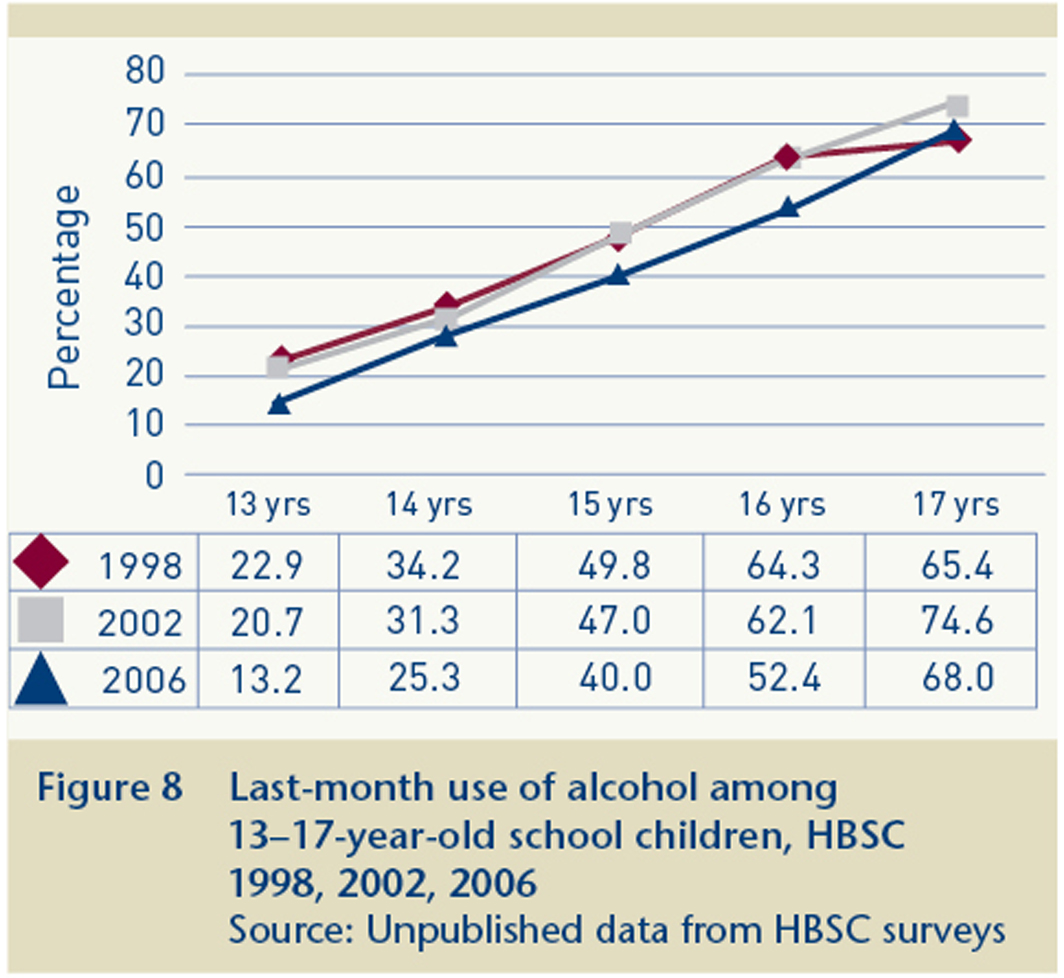
According to the 2007 ESPAD survey, over half of 15–16-year-olds reported having ever been drunk (Figure 9). The percentages reporting drunkenness did not vary to any great extent across the three HBSC surveys. However, there were variations between the ESPAD and the HBSC surveys: in the 1999 and 2003 ESPAD surveys, the proportion of 15–16-year-olds who reported having ever been drunk was considerably higher than in the HBSC surveys. The 2007 ESPAD results were similar to those of the 2006 HBSC survey.
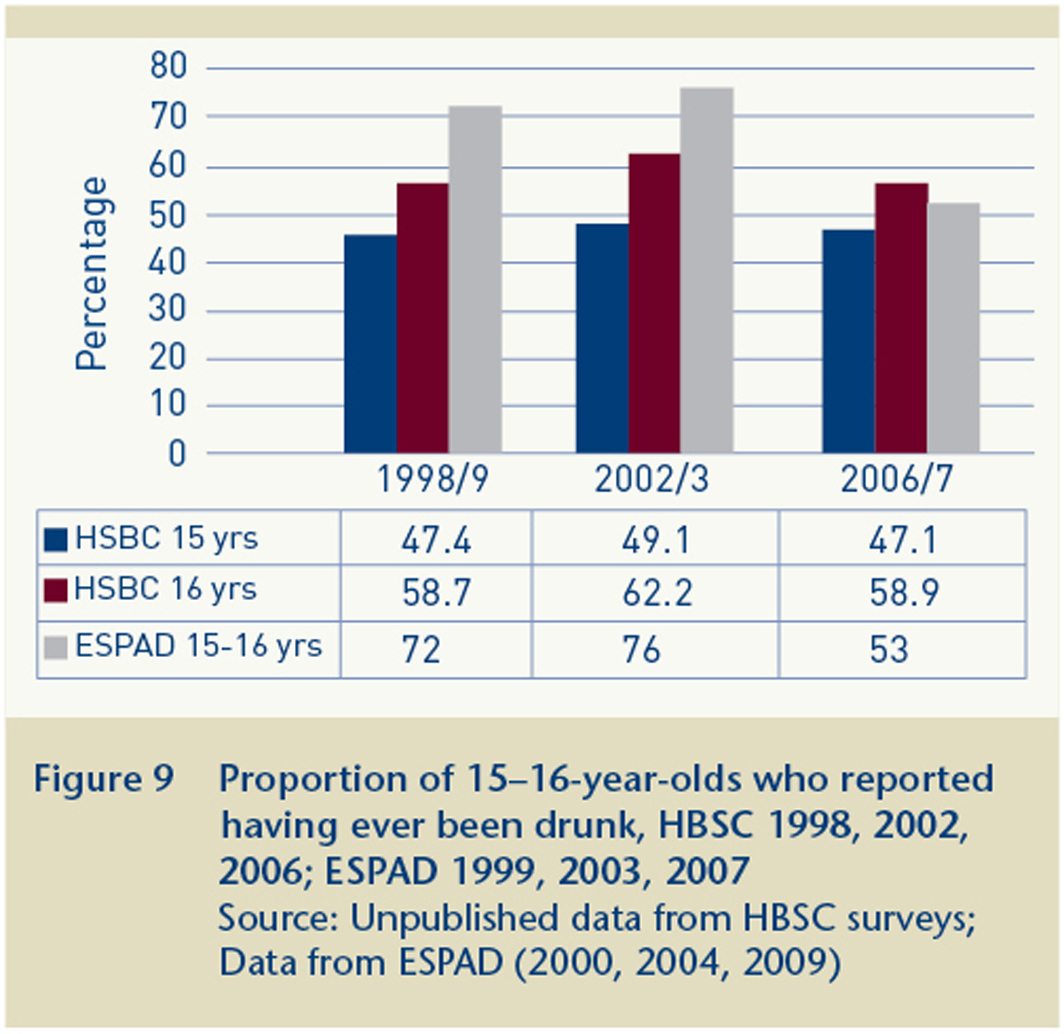
The proportion of 15-year-olds who reported having been drunk at least 10 times remained relatively stable over the three HBSC surveys, while the proportion of 16-year-olds decreased marginally (Figure 10). The ESPAD surveys of 1999 and 2003 reported 37% and 41%, respectively, of 15- and 16-year-olds who had been drunk at least 10 times. In comparison, just 17% reported the same in 2007. The results of the ESPAD and HBSC surveys were closer in 2007 than in previous years.
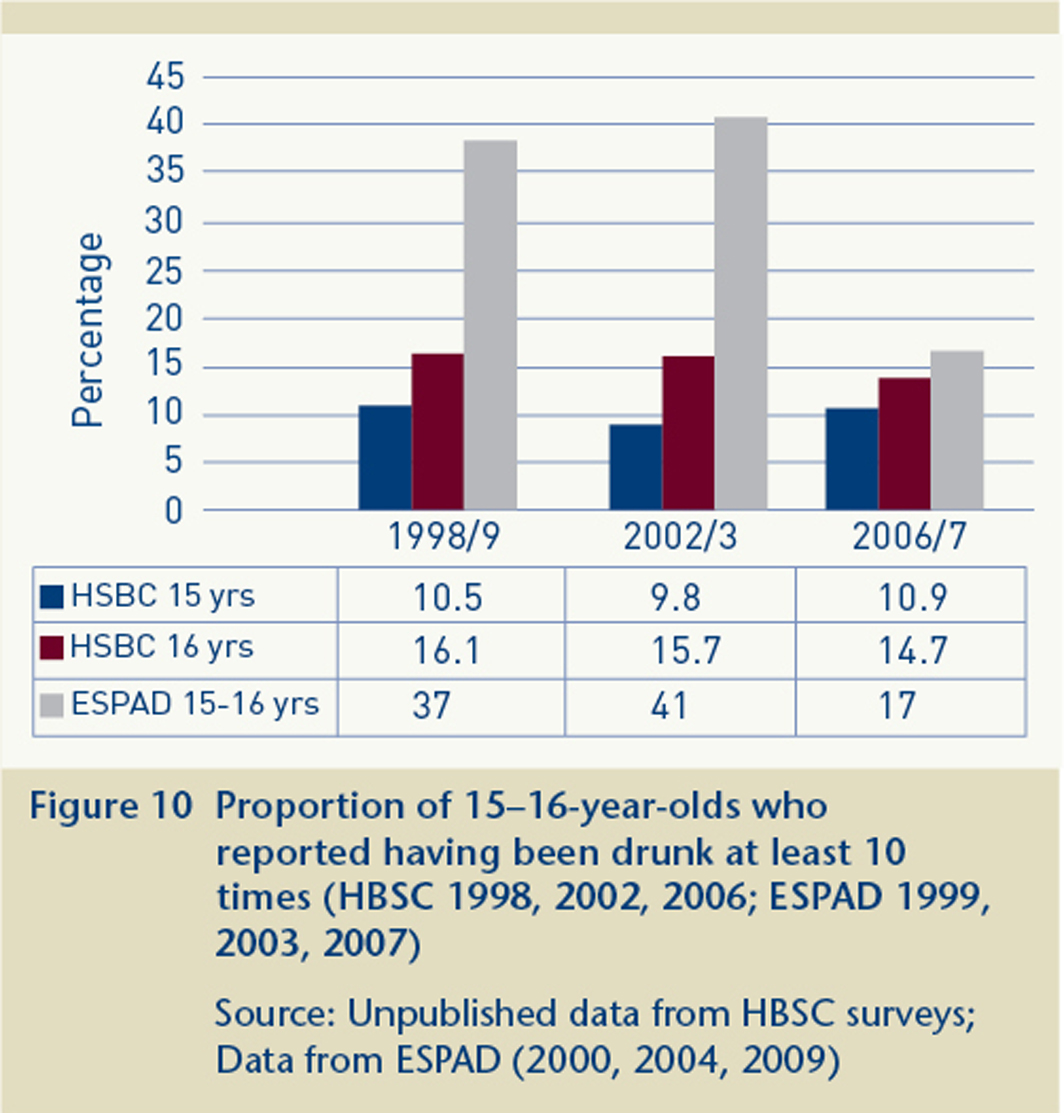
Conclusion
A Substance use and dependence > Prevalence > Problem substance use
VA Geographic area > Europe > Ireland
A Substance use and dependence > Prevalence > Substance use behaviour > Alcohol consumption
A Substance use and dependence > Prevalence > Substance use behaviour
Repository Staff Only: item control page